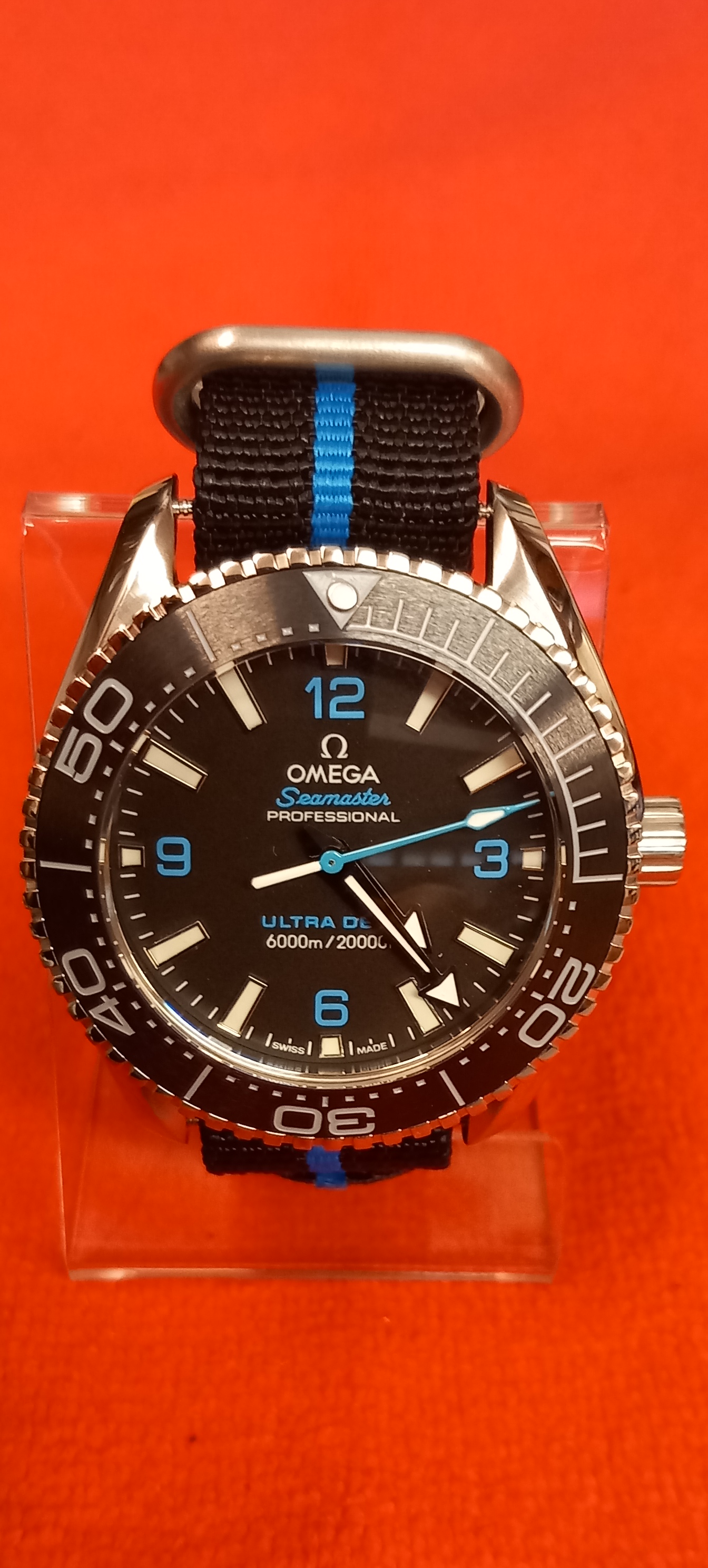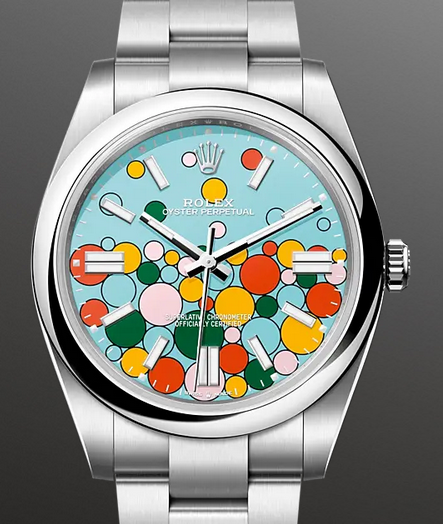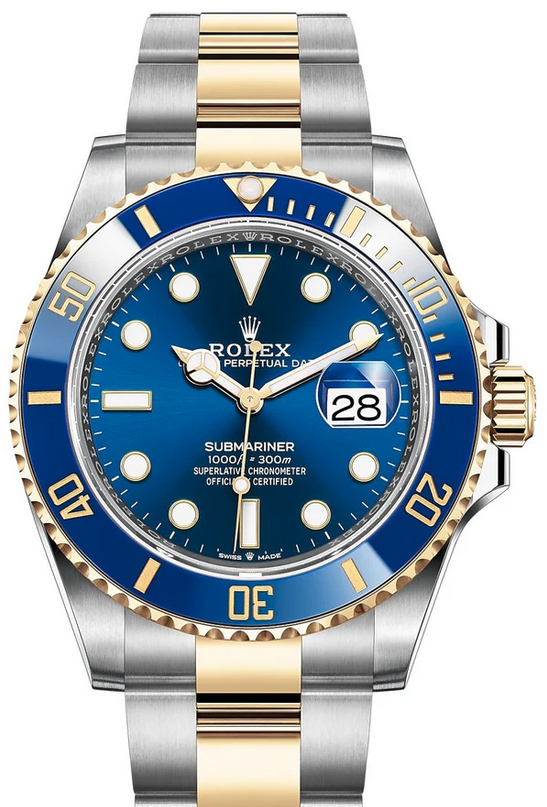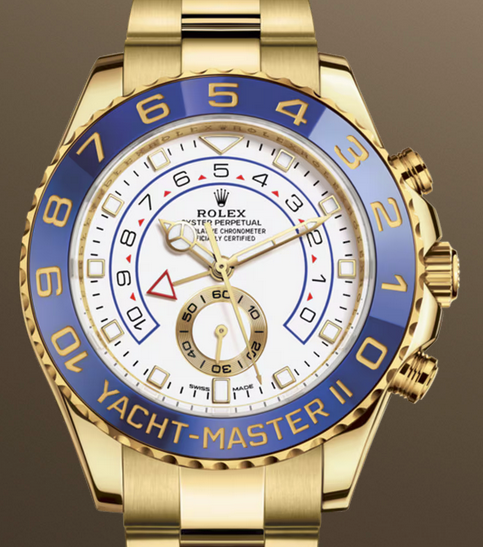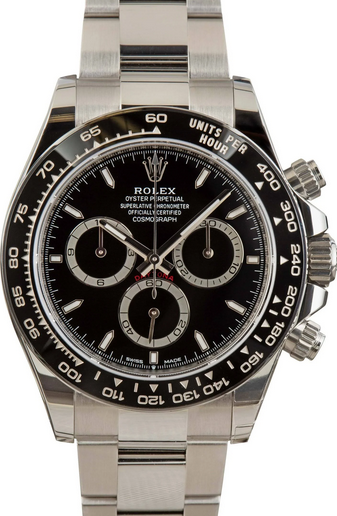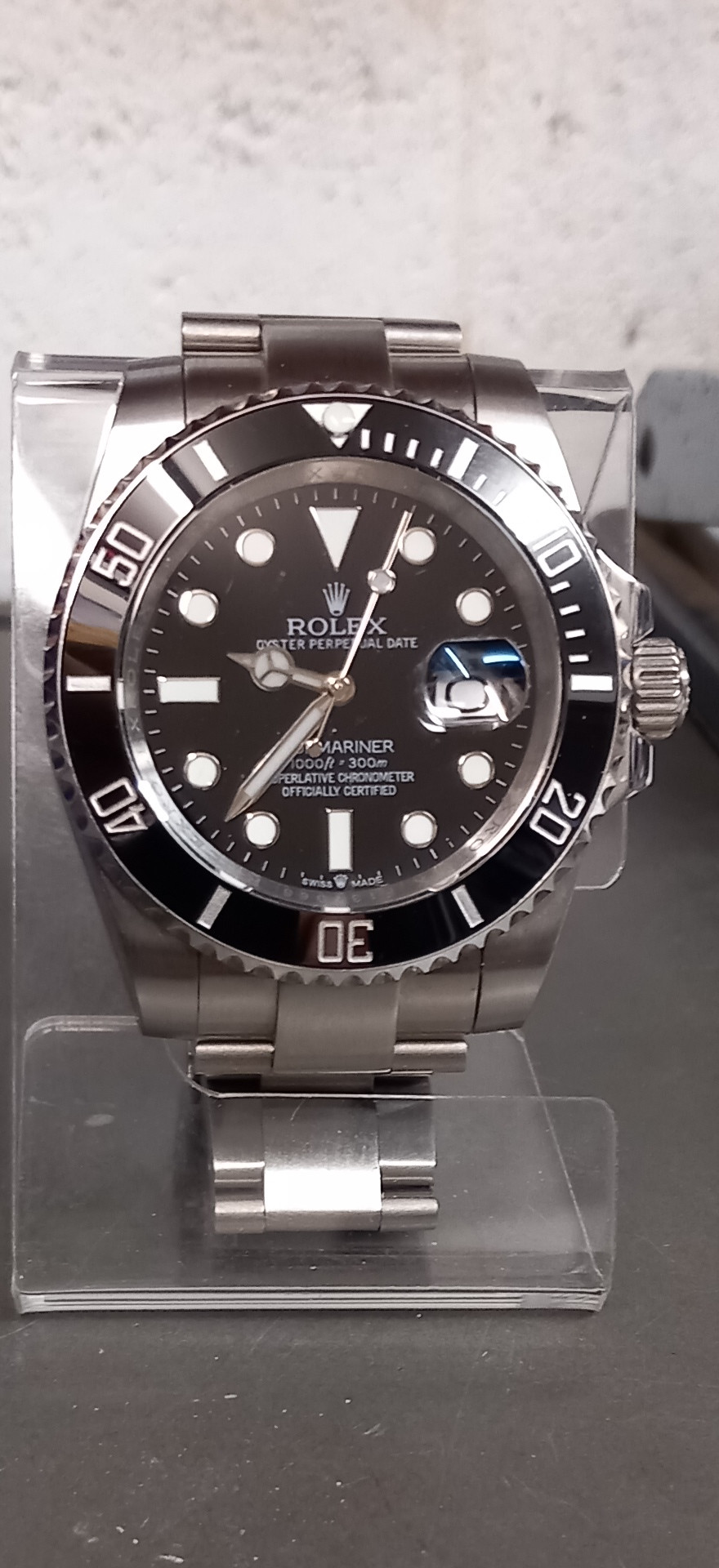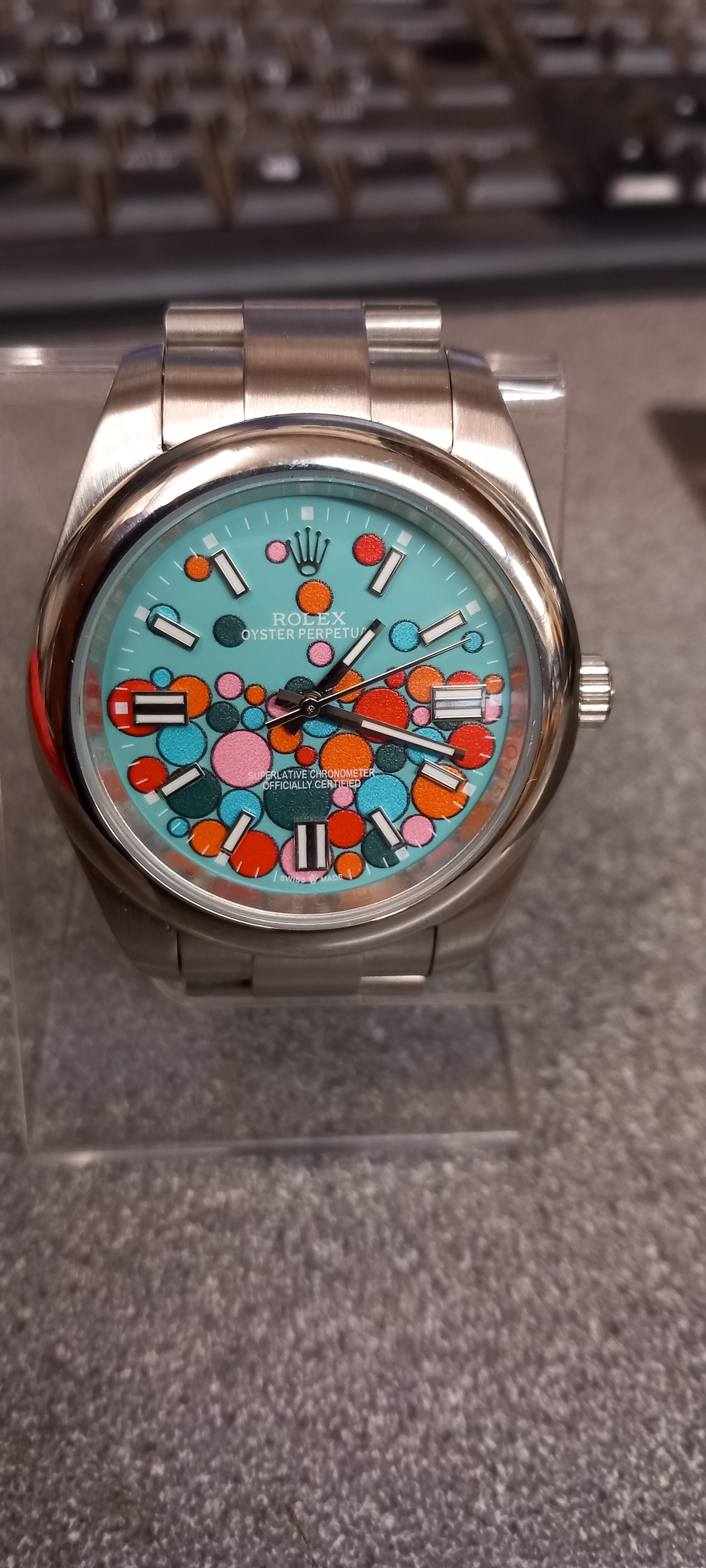Finally got the 22mm Strap for the Omega Ultra Deep, the pictures were sorted out and replaced one of them, (James Camerons Submersible) with a better one that includes him just before the launch / journey to the Mariana Trench.
Thanks due to my good friend on here who edited the pictures and tidied up my original mess, he knows who he is

So here's the picture and a Video, all I have left to do is to add some lighting to the Cabinet and DSC Display, including tidying the wires to the turntable, I hate visible wiring especially on something like this.
There is also a photo of the new Pictures, and the Story Frame and I'll copy and paste the text below for anyone who doesn't know it or wants to read my version which was largely composed by research from many different articles on the subject, and edited / typed out by myself.
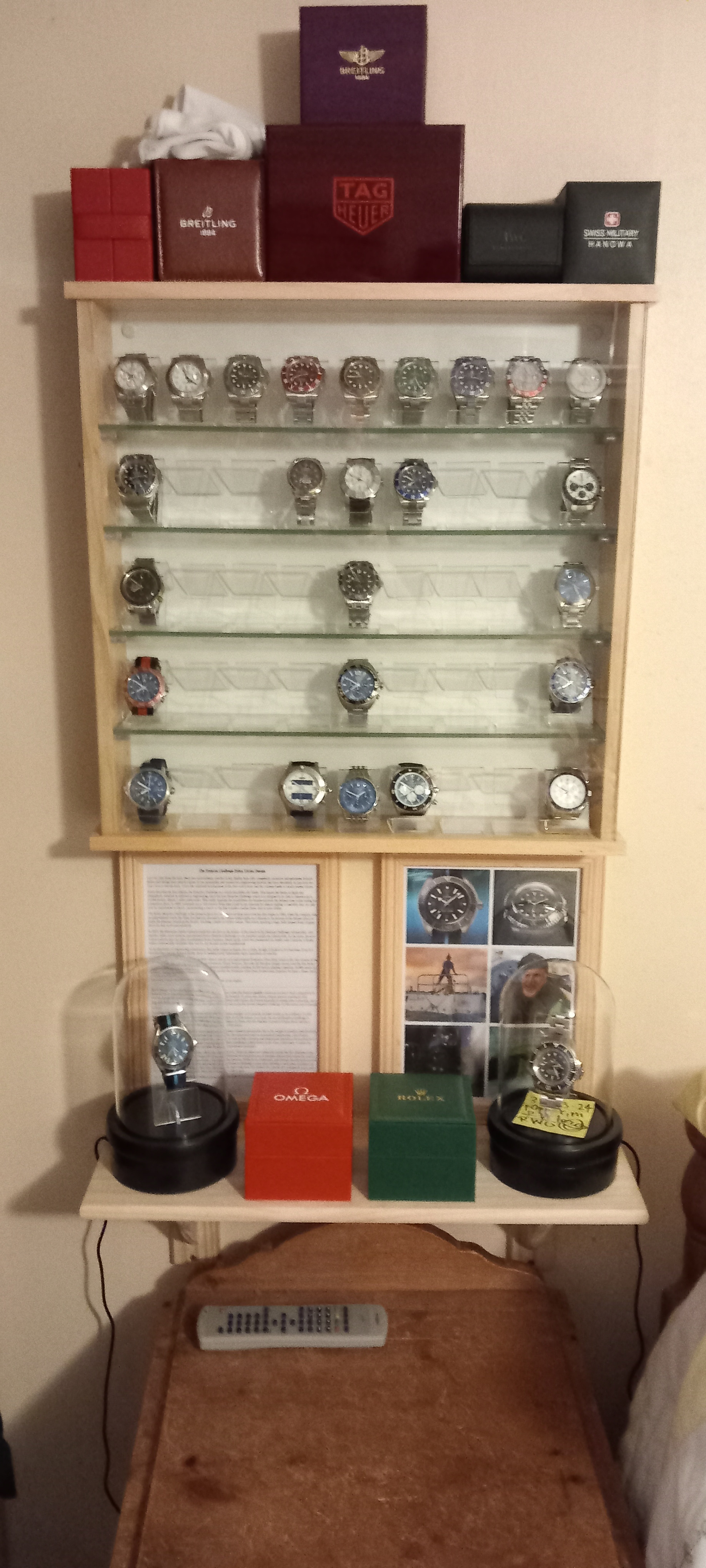
Copy of the final pictures in the frame, as per the watches in the display Omega on left side, Rolex on right :-
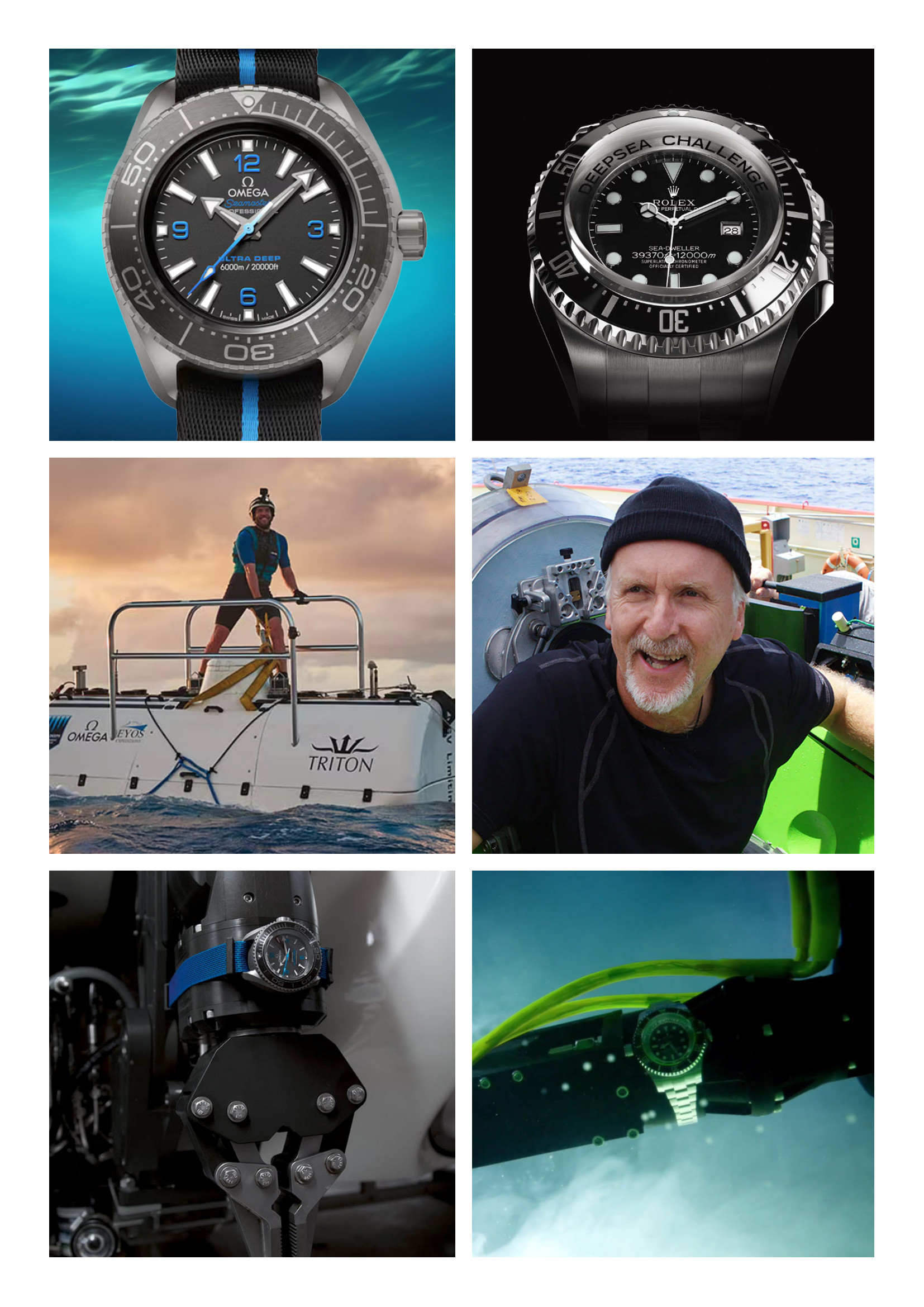
Copy and paste of my framed version of the Deepsea Challenge story :-
The Deepsea Challenge Rolex Versus Omega
Let’s be clear from the start, these two extraordinary watches in my display here offer completely excessive and gratuitous features. Rolex and Omega have played a game of one upmanship and created two engineering marvels that have absolutely no practical use. And I love it and the story. I love the continual development of the dive watch form and the constant battle to outwit mother nature.
Rolex describes its new release, the DeepSea Challenge as a watch that defies the limits. That means the limits of depth and atmospheric pressure in addition to engineering, since the first DeepSea Challenge watch was designed to be able to function up to 11,000 meters, almost 7 miles underwater. This vastly outstrips the possibilities for human survival, the deepest-ever ocean outing for a saturation diver, in 1988, bottomed out at 534 meters. What then could be the rationale for almost tripling a capability that can only ever be experienced in theory, necessitating a watch so big that it pushes another limit, that of wear-ability.
The Rolex DeepSea Challenge is the pinnacle piece in a succession of deep water watches that began in 1960, when the company sent an experimental watch, the Deep Sea Special, attached to the Trieste bathyscaphe on a descent to the bottom of the deepest place on Earth, the Mariana Trench in the Pacific, reaching a depth of 10,911 meters. That watch, sporting a huge, bulb-shaped dome of glass above its dial, performed perfectly.
In 2012, the filmmaker James Cameron made his own dive to the bottom of the trench in the Deepsea Challenger submersible, with another, rather more modern, experimental Rolex DeepSea Challenge watch, attached outside the submersible. In one sense, the new watch could be seen as a slice of unfinished Rolex business. Based on the watch that plummeted the depths with Cameron, it finally makes commercially available what was for six decades purely experimental.
As an expression of engineering competency, that really cannot be beaten. For a while, though, it looked as if it had been. Even if it invented the concept, Rolex is hardly alone in making barely fathomable depth capabilities of watches.
The battle was truly joined by Omega in 2019 when it sent its own experimental Seamaster Ultra Deep watch to the very bottom of the Mariana Trench, affixed to the Submersible of adventurer Victor Vescovo. Not only did this give Omega victory over the first Rolex DeepSea Challenge watch, Omega now had the deepest travelled watch, reaching 10,916 meters, pipping Camerons 10,908 meters by 8 meters. Omega developed a commercially available model, the Seamaster Ultra Deep Professional, diameter 45.5mm x 18mm thick. It is priced at £10,350.
This is the Omega Ultra Deep 6000m watch here on the left of my display.
------------------------------------------------------------------------------------------------------------------------------------------------------------------
But If Omega can have the deepest travelled watch, Rolex now wants the deepest capable watch you can buy!! Such competition by necessity breeds innovation, pushing manufacturing techniques forward. To prove this, Rolex, already given to putting its dive watches through the sternest testing processes imaginable, worked with Comex, the French specialist in submersible technology and a long-term Rolex partner, to develop a new ultra-high-pressure tank to put the second DeepSea Challenge 12,000 metres watch through its paces.
According to the brand, each watch is tested with an added “safety margin” of 25 percent, in other words, to be certified to 11,000 meters, it is actually subjected to a pressure equivalent to a depth of 13,750 meters. as a result, the second DeepSea Challenge is necessarily huge, with a diameter of 52 millimeters, case thickness of 23mm, plus the Sapphire Crystal is 9.5mm thick, and has a 61mm Lug to Lug length. This watch has a depth rating of 12,000 metres.
Something that made the experimental watch taken down by James Cameron unwearable due to the weight of stainless steel involved. This new watch, however, is constructed from Grade 5 titanium, the same metal used in aeronautical engineering, which boasts extreme lightness coupled with strength to match that of steel, as well as high corrosion and temperature resistance, factors that have made it an increasingly ubiquitous material in watchmaking, and something in which Rolex is, for once, a latecomer. It makes the Deepsea Challenge, at 251 grams, 30 percent lighter than the experimental prototype.
Internally, the watch is like a greatest hits of Rolex dive watch tech. These are annotated extensively around the face elements of the watch. This includes Rolex’s patented Ring Lock System, a reinforced structural element of nitrogen-alloyed steel within the watch’s architecture that ensures the watch keeps its form under extreme pressure. While Rolex enthusiasts, and perhaps the odd hardcore dive professional, will lap it up as the ultimate underwater tool, the Deepsea Challenge is more than anything a reassertion of primacy by the company that, with the invention in 1926 of the Oyster case that it still uses, first defined the concept of a waterproof watch, and has continued to push it to a place where there really is nowhere left to go!!
This is the Rolex DeepSea Challenge 12000m watch here on the right of my display.
So, if you got this far, thank you for reading and I hope you enjoyed hearing about my little project.





